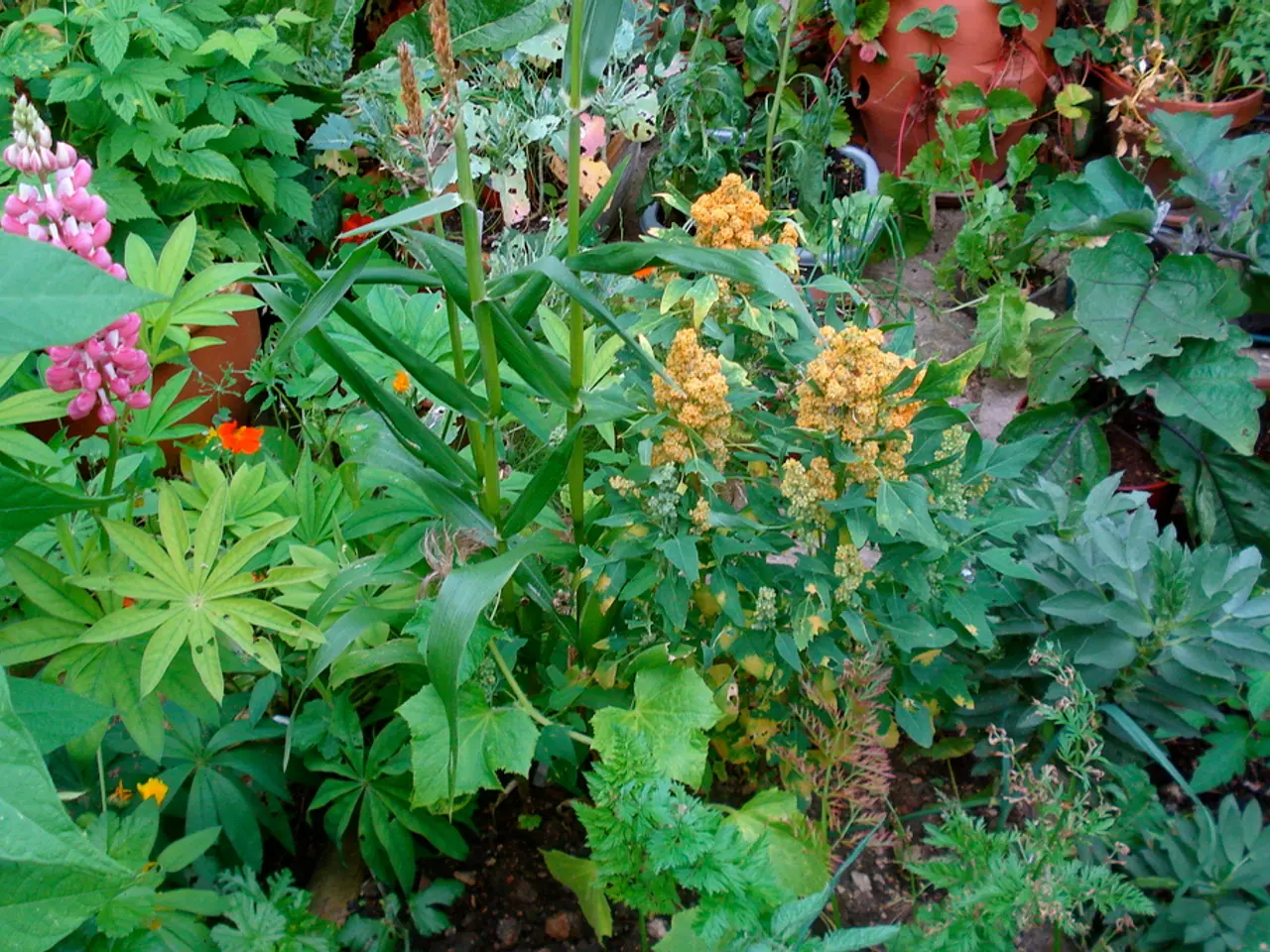Essential Summer Guideline for Reviving Overheated Plants: 6 Practical Solutions
During hot weather, plants such as tomatoes, peppers, and squash are particularly susceptible to a condition known as blossom end rot. Rising global temperatures and heatwaves are causing challenges for gardeners in mitigating stress on plants due to heat and drought.
To care for heat-stressed plants, deep, infrequent watering during cool parts of the day is key. Watering early in the morning (5-9am) or late evening (after 7pm) helps to prevent water loss by evaporation and reduces the risk of diseases linked to prolonged leaf wetness. For container plants, which dry out faster, daily checks and watering may be needed, with thorough soaking until water drains out to saturate the root zone.
Deep watering during a heatwave allows plants to access moisture reserves deeper in the soil. Mulching plants can help conserve moisture, keep plants cooler, and reduce evaporation. A 2-3 inch layer of natural mulch such as compost, hay, or wood chips can be added around the base of plants.
Container plants require daily watering, even twice a day in high temperatures, and should be watered thoroughly until water can be seen coming out from the drainage holes. Pests and diseases are more likely to take hold as the plant is weakened during periods of heat and drought.
In addition to watering, it's important to avoid heavy pruning and pause fertilizing until plants recover. Trimming away any severely damaged or scorched leaves and dead flowers is beneficial as it reduces the plant's energy expenditure on these parts.
During intense heat, consider misting plants (light spray on surrounding air, not heavy leaf wetting) to cool them. Using drip irrigation or soaker hoses to minimize water loss compared to overhead sprinklers is also beneficial.
For container plants, moving them to shadier locations, using shade covers, and avoiding soaking the foliage can provide extra care. Temporary shade solutions like shade cloths, parasols, or sheets can protect sensitive plants during peak heat hours (10am–4pm).
Leaf scorch may be visible on leaves, which develop brown, dry edges or tips, in heat-stressed plants. Stunted growth may be prevalent in prolonged periods of heat and drought in plants. Flower and bud drop will occur prematurely as the heat-stressed plant tries to conserve energy.
Curling leaves is a response to excessive heat and water loss in heat-stressed plants. Yellowing leaves, particularly in the lower part of the plant, indicate a lack of moisture in heat-stressed plants. Wilting of leaves and flowers may occur due to a lack of water, even if the soil is moist, in heat-stressed plants.
Using double-walled containers helps to insulate the roots of plants against both extreme heat and cold. The best time to water plants is first thing in the morning, enabling plants to take up the moisture before the heat peaks. Plants with shallow root systems result from watering too lightly, as the moisture only penetrates the top layer of soil.
In summary, deep, infrequent watering during cool parts of the day, mulching, shading, and careful monitoring—especially of container plants—are key to supporting heat-stressed plants during heatwaves. Knowing how to water gardens during heatwaves is crucial for preserving lawns, ornamental plants, and vegetables in hot weather.
Paying attention to one's home-and-garden can involve adjusting the lifestyle during heatwaves to keep plants healthy. To mitigate blossom end rot in tomatoes, peppers, and squash, for instance, deep, infrequent watering during cool parts of the day is recommended. Additionally, implementing a home-gardening practice of mulching plants with organic matter can help conserve moisture and cool the plants during hot weather.




